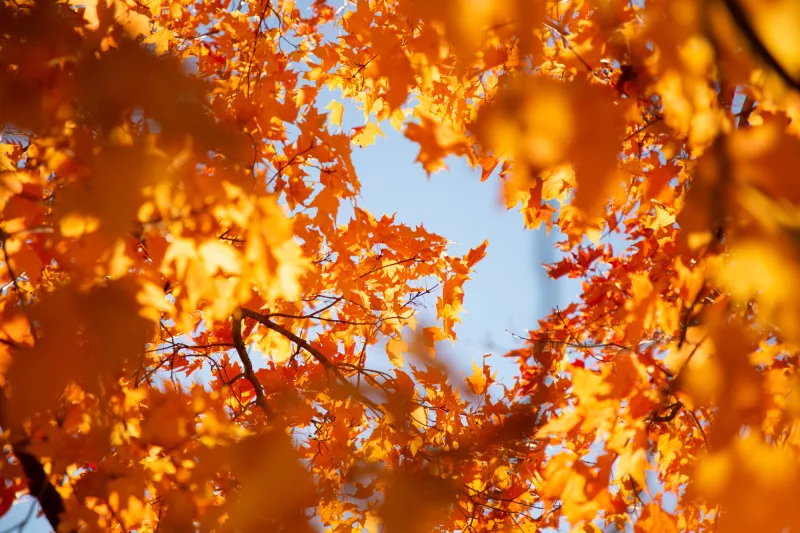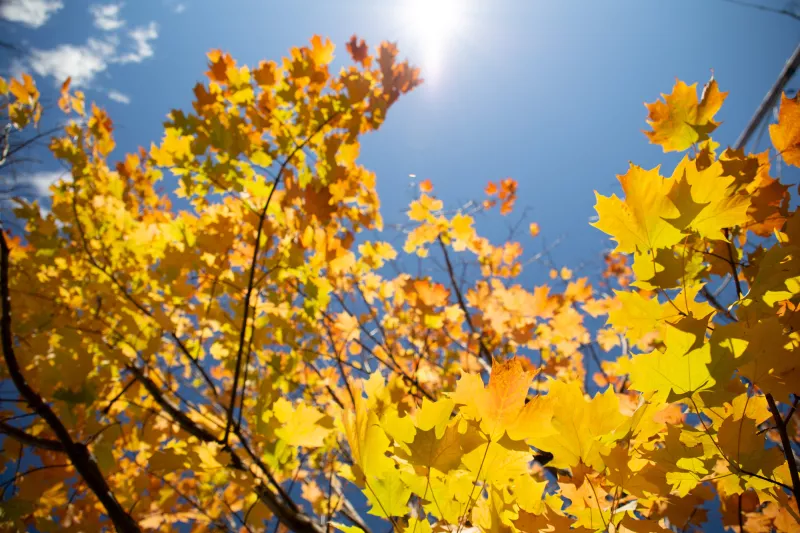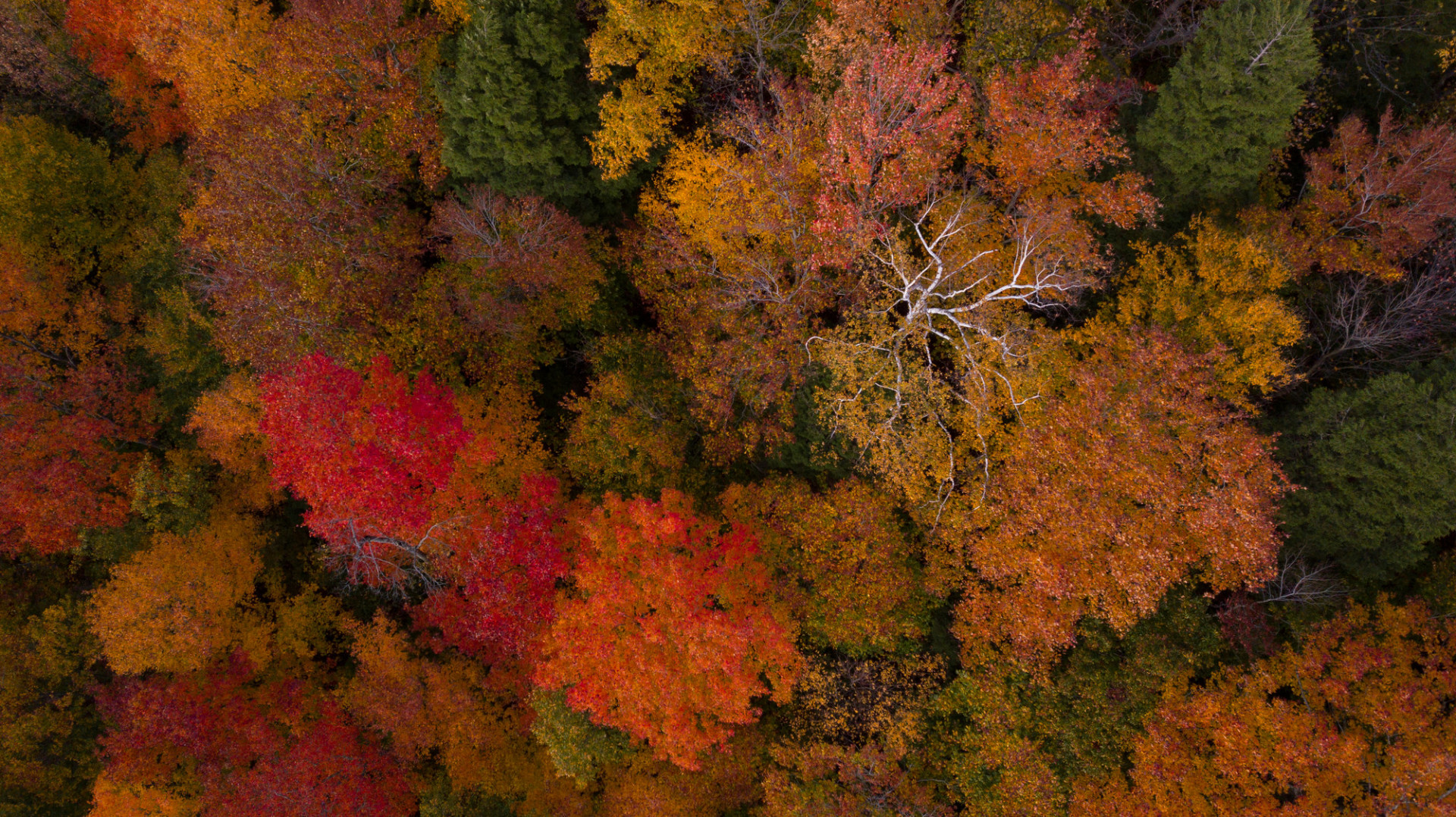
"Every leaf speaks bliss to me, fluttering from the autumn tree."
-Emily Brontë
Ah, fall — the most wonderful time of the year. The air is crisp, the smell of baked goods fills the air, and — my absolute favorite — the leaves change their colors. It recently dawned on me that for as much as I marveled at the colorful spectacle of autumn, I had essentially no concept of how this change occurred. After some research (okay, a lot of research — I went down a rabbit hole), I found myself revisiting concepts and phrases from high school science classes.
If you’re anything like me, you likely haven’t discussed photosynthesis, chloroplasts, or chlorophyll in depth since grade school. But these terms and their functions are central to the visual feast of fall foliage we are treated to year after year.
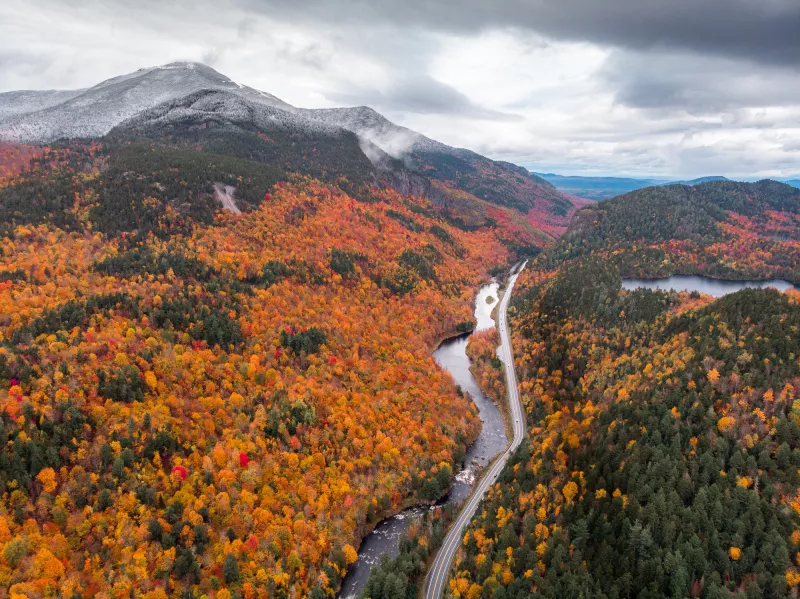
You're going to talk to me about all those things right now, aren't you? I can feel it.
You'd be correct! But by the end of this piece, you're going to be a leaf-color-changing-process master!
I mean, I HAVE always been a bit curious. Okay, let's do it. Where do we begin?
Let's begin where the colors begin — photosynthesis, a critical aspect of how the beautiful colors of fall appear.
To refresh our memories, photosynthesis is the natural process by which plants use sunlight to make food from water and carbon dioxide. This process takes place in the leaves of the plant. Let’s look at a photo of a leaf, as seen under a microscope.
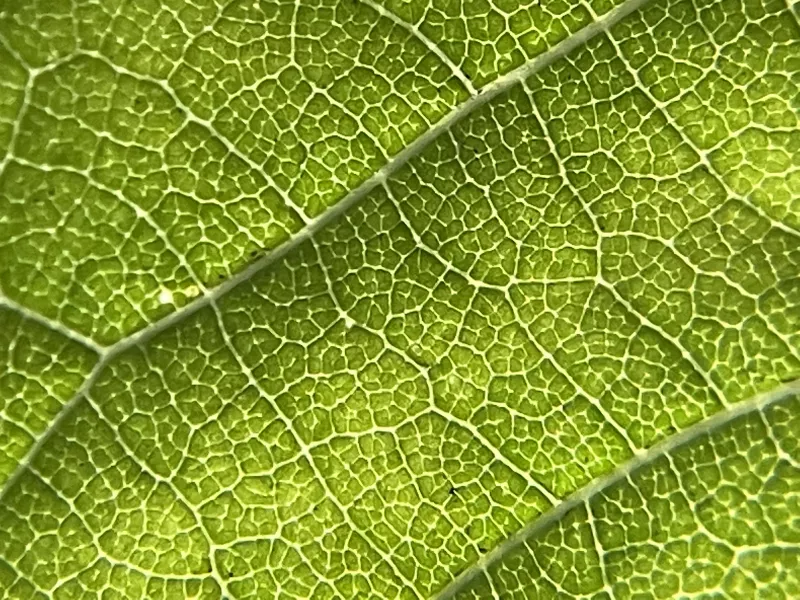
Well THAT'S pretty cool! How did you get this photo?!
My esteemed colleague, word aficionado, and science enthusiast, Aurora Pfaff, just HAPPENED to purchase a microscope that HAPPENS to take pictures. I asked her if she wanted to snag some photos of plant cells for us, and voilá!
Talk about good timing! I vaguely remember seeing images like this in high school biology, but it’s been a while.
Don’t worry, we will go over everything together. First of all, what is the dominant color that you’re seeing?
Green.
Perfect. As you take a closer look, do you notice how it isn’t one solid green color but, instead, these little green blobs that are all bunched together?
Yeah. Are those plant cells?
They are! And if you really, really study these images, you’ll notice the green color looks more "spotty” rather than one solid green color.
Oh yeah, I guess I do see that.
Those little bits of color are chloroplasts, microscopic organs of sorts inside the cells themselves. These chloroplasts host the photosynthesis process. If you think of throwing a house party, photosynthesis is the party and a chloroplast is the house that is hosting the party.
Got it. So leaves are just throwing a big party all the time?
Well, not ALL the time, but while they are still attached to the tree, yes. There’s a lot happening in there. That leads me to the next important part:
Chloroplasts, themselves, are not green. Chloroplasts contain chlorophyll, a green pigment which plays two major roles.
First, chlorophyll absorbs sunlight for photosynthesis. Its next role, and the one we are able to see, is giving plants (and chloroplasts) their green color. Going back to our metaphor, think of chlorophyll as green guests that were invited into the house for the party.
With the abundance of sunshine, precipitation, and warmer temperatures, the spring and summer seasons are when most food is created for a tree’s growth. That means a bunch of chlorophyll has been created, hence why trees appear green.
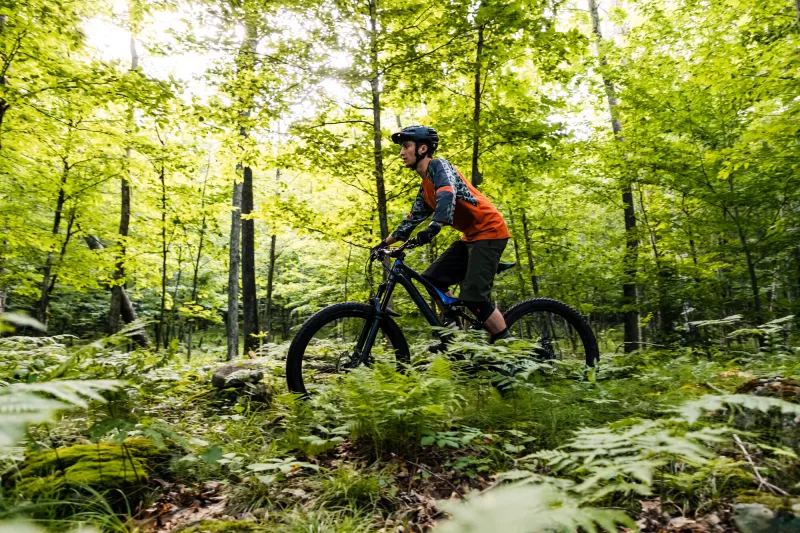
Okay, so trees are green because of chlorophyll. Got it. But with all due respect, I’m not as interested in why trees are green as I am with why they become so colorful in the fall.
I promise you — this all comes together.
While this greenery, food, and oxygen-producing photosynthesis party is taking place, chlorophyll is not the only guest inside the chloroplasts. In fact, there are two more guests that are much more shy than chlorophyll and like to hang out in the background. Their names are carotenoid (pronounced cah-RAH-teh-noid) and xanthophyll (pronounced ZAN-tha-fil).
So wait, there are three guests at the party, not just chlorophyll?
Exactly.
Carotenoid and xanthophyll are pigments, just like chlorophyll. But while chlorophyll is green, carotenoid is orange and xanthophyll is yellow. (Now you know how carrots got their name!) These two pigments are in the leaves the entire time the leaf is green, just like chlorophyll. But there is so much chlorophyll working hard to produce food that it gets the spotlight. Carotenoid and xanthophyll patiently wait their turn, understanding how important it is to let chlorophyll get all the attention until its work is done.
However, as temperatures cool and hours of daylight dwindle, the photosynthesis gradually comes to a halt. And this, my dear dendrophile, means the show is about to begin.
Oh goodie. So NOW do I get to hear how leaves change colors?!
What can I say? I like to build suspense. But yes, we’re finally getting there.
Trees — and plants in general — are pretty darn smart. They know how to survive, and they know how to survive efficiently. The energy it would require for a tree to capture dwindling sunlight in the fall and winter months is simply too high to be sustainable and, therefore, survivable. Knowing this, trees go into food-creating hyperdrive in spring and summer, ease off on its efforts come autumn, and inevitably shut off before winter comes.
Why are we still talking about photosynthesis?
Because, sassy-pants, the rate of photosynthesis — whether it is ramping up or slowing down — is the key to the colors in the leaves.
Fine. I’m listening.
How kind of you.
As the photosynthesis party slows down, chlorophyll begins to break down and, with it, the green hues of the leaves. Think of it as chlorophyll getting tired at the end of the party and deciding it is either time to take a nap or go home. But this is the moment our friends carotenoid and xanthophyll have been waiting for — their time to shine in the spotlight in all their colorful glory.
As the amount of chlorophyll within the chloroplasts lessens, the remaining chlorophyll combines with carotenoid and xanthophyll to create the visual feast that is autumn. Lower amounts of chlorophyll in the mix mean a higher comparative ratio of carotenoid and xanthophyll. This means beautiful oranges and yellows of the leaves begin to pop through before eventually becoming the dominant color.
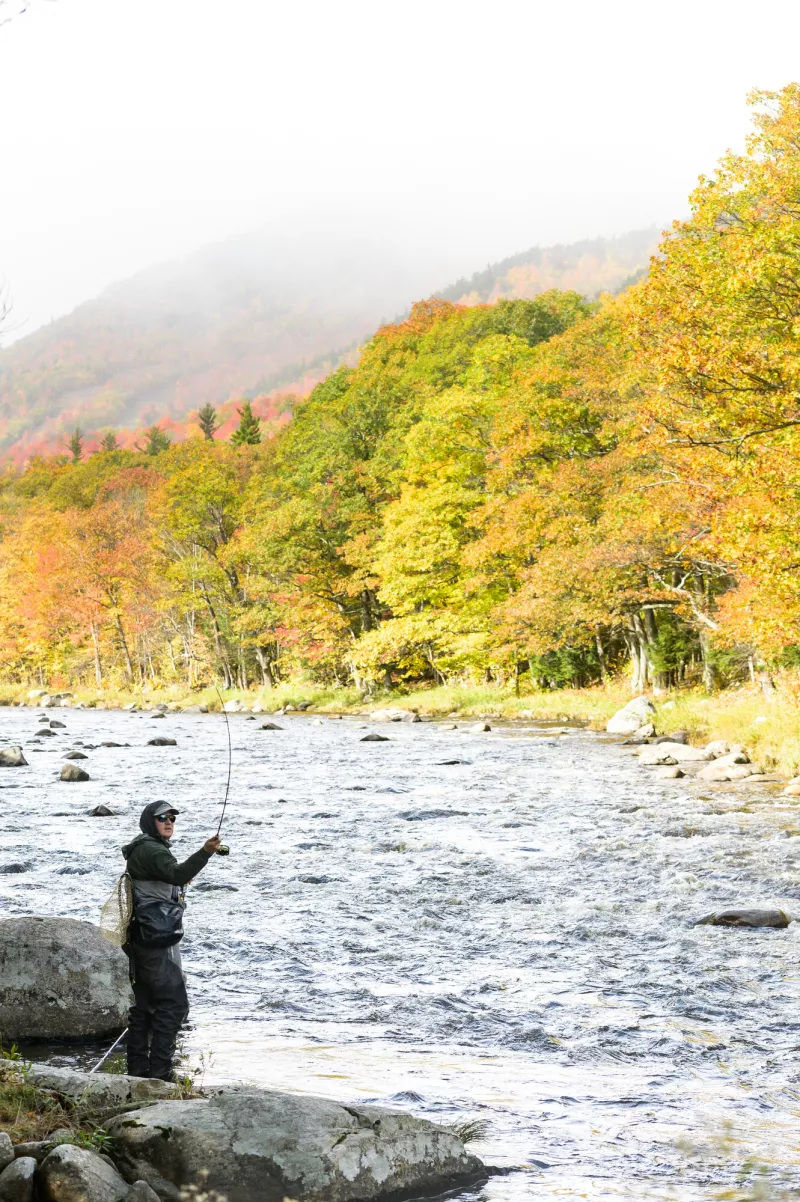
Huh. Well would ya look at that. But if this is happening in the fall, why am I seeing different colors in the leaves around the Adirondacks at the end of summer?
Great observation, and great question!
As you explore the Adirondacks in late summer, it is perfectly normal for the leaves to subtly start turning yellow and orange with even a hint of some reds here and there (which we will get to). Now that you know that changes in color is a sign of photosynthesis slowing down, what you are seeing is exactly that: the tree is essentially preparing to hibernate for the winter.
Wait — trees hibernate?
Basically! Just like animals that take in a massive amount of nutrition before sleeping throughout the winter, trees are basically doing the same thing. They work hard to produce food during the warm weather and are dormant in the winter.
So is that why places with warmer climates that aren’t dry are always so green?
Exactly! With endless sunshine, warmth, and precipitation readily available, chlorophyll gets to party all day, every day.
But what about the reds? Doesn’t the red pigment hang out with carotenoid and xanthophyll, too?
Not exactly! In fact, the reds in leaves are an entirely separate biological process whose purpose and function has perplexed researchers for over a century — that is, until recently. But more on that later.
Allow me to introduce you to our fierce and fiery final pigment, anthocyanin (pronounced an-tha-SIGH-ah-nin)!
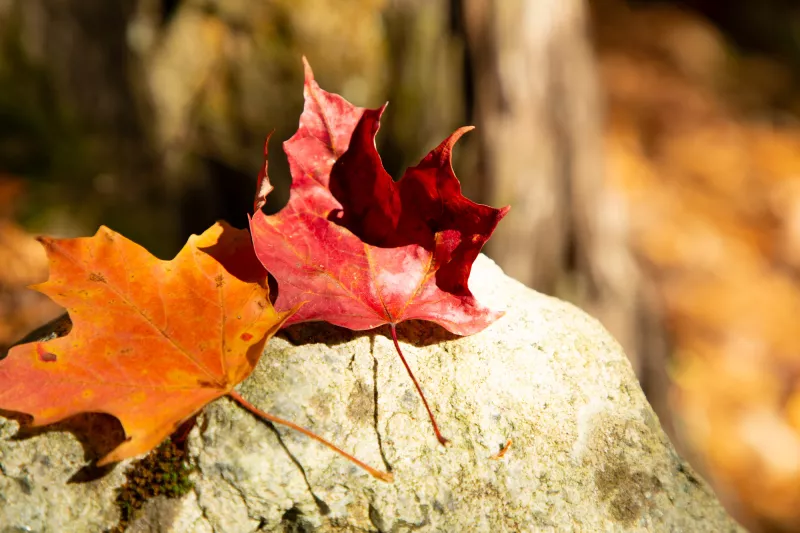
Anthocyanin is responsible for producing reds, purples, and blues in the natural world (think blackberries, raspberries, blueberries, and red cabbage). In trees, anthocyanin gives leaves their red and purple pigments and is only produced in the fall.
Before we get into our lovely anthocyanin, we first have to talk about one very important aspect of autumn: the leaves falling off the trees.
Oh! Yeah! How DO leaves fall off the tree?
Have you ever picked up a fallen leaf — or, if you believe in fun, caught one falling through the sky — and noticed the thick little nub at the bottom of the stem?
As winter approaches, daylight hours decrease and the air becomes more dry. This means the time is approaching when photosynthesis can no longer take place, and trees understand they are entering their equivalent of hibernation. That nub at the bottom of the leaf stem was actually created by the tree in order to complete this transition into winter.
The trees form a corklike layer of cells at the attachment site of the leaf stem and the branch, sealing off the connective tissues to the tree — including their water supply — which allows the leaves to fall (and gives the leaves that awesome autumn sound as they brush together in the wind). The shedding of leaves has numerous roles to the health of the tree, one of them being the ability of the tree to now absorb water that would evaporate from the leaves had they stayed attached. Shedding leaves also allows trees to no longer have to take care of the leaves in attempts to keep the leaves alive. This essentially allows trees to keep their nutrition supply from photosynthesis stored within themselves to survive winter and grow new leaves come spring.
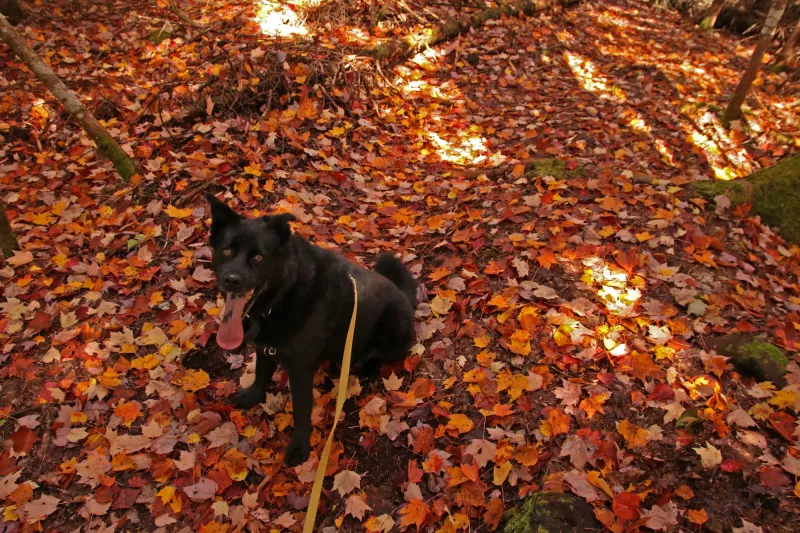
Whoa. I had no idea. Okay. So you said knowing about this whole leaf-falling process thing was needed in order to understand more about ana….ana…
Anthocyanin.
Yeah! The red stuff.
Pigment.
Whatever.
Sigh.
Okay, okay, okay. How does the PIGMENT, anthocyanin, get made?
As that cork-like layer of cells forms at the base of the leaves, sugars now get trapped within the leaf itself. This additional sugar combined with sunshine creates the vibrant red and purple hues that are a fan-favorite of leaf peepers both near and far and make their appearance unique to oranges and yellows.
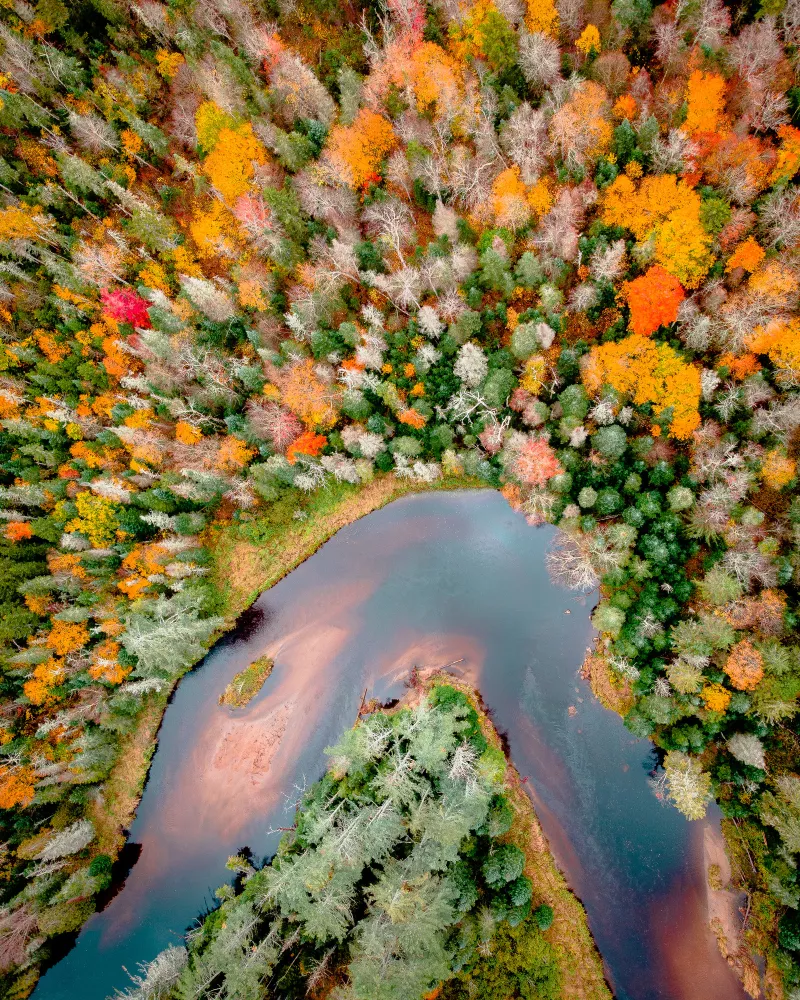
Ooooh. So yellow and oranges were already in the leaves, and reds are created later?
Exactly. Oranges and yellows are naturally in the leaves already. Those colors show as chlorophyll dwindles. The reds are the result of that dwindling.
Okay. I think I get it. So why don’t all leaves turn the same color at the same time?
Great question! Each leaf has a life of its own and operates as an independent being. Every leaf has a unique ratio of pigments. Some leaves don’t produce any anthocyanin and end up appearing more orange or yellow — a reflection of whether the leaf has more carotenoid (orange) or xanthyphyll (yellow). So now when you see an orange leaf, you can say to your friends, “Wow, look at all that carotenoid.”
No one says that.
I think we’re setting a new trend!
This will never be a trend.
I like to live in hope!
Okay, well, while you are living in hope, I'm going to go hunt for chlorophyll, carotenoid, xanthyphyll, and anthocyanin. Thanks for the lessons!
Happy leaf peeping!
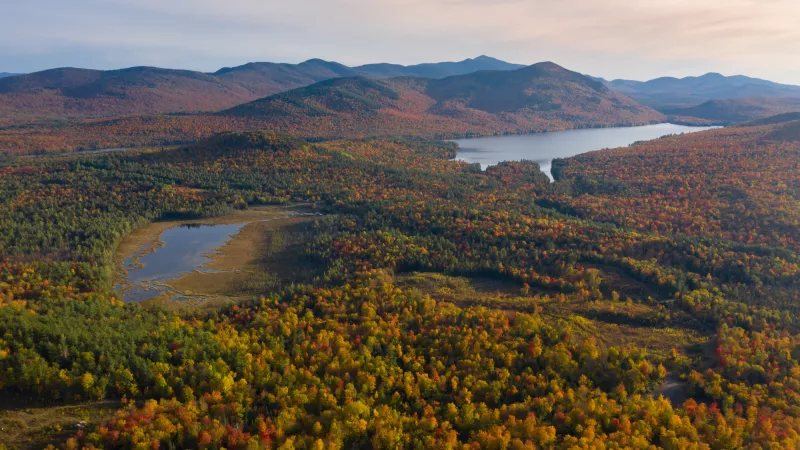
You can't possibly get your fill of the beautiful fall foliage in Wilmington, NY in just one day! Book a stay at any of our lodging accommodations and make a weekend of it! While you're here, try your hand at mountain biking, hiking, or any other outdoor adventure Wilmington has to offer. Make sure to add a walk along the waterfalls of High Falls Gorge to your list! Want a break from the fresh air? Stop at one of our shops for a souvenir, go for a scenic drive, or enjoy the regional flavors at any of our restaurants. Whatever you decide, the fun and beauty of Wilmington will have you planning your next visit!

